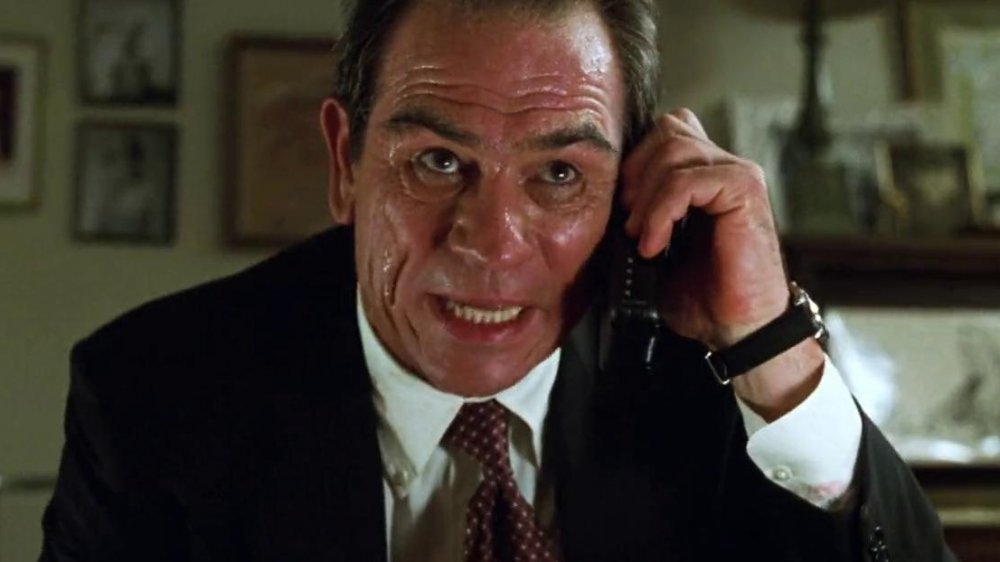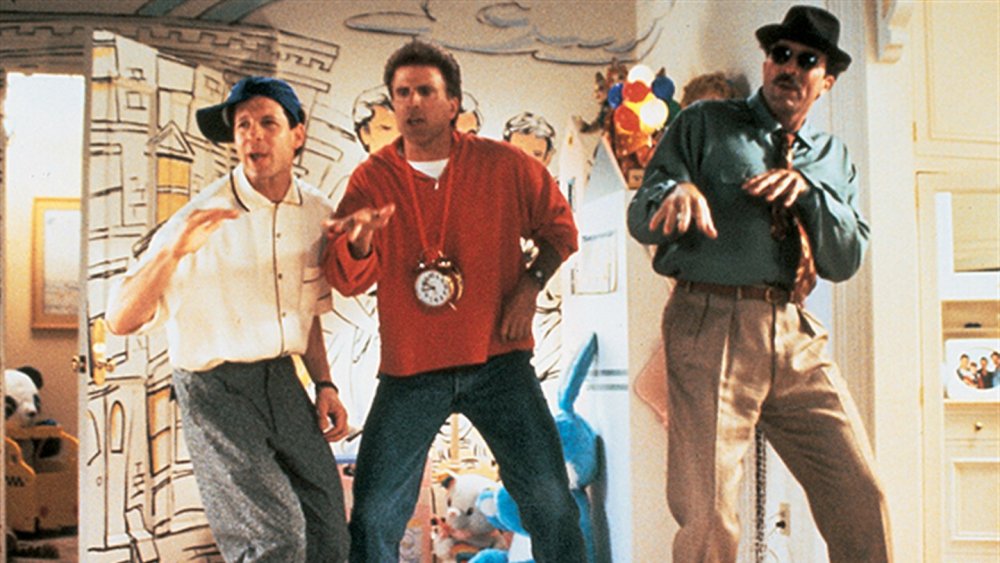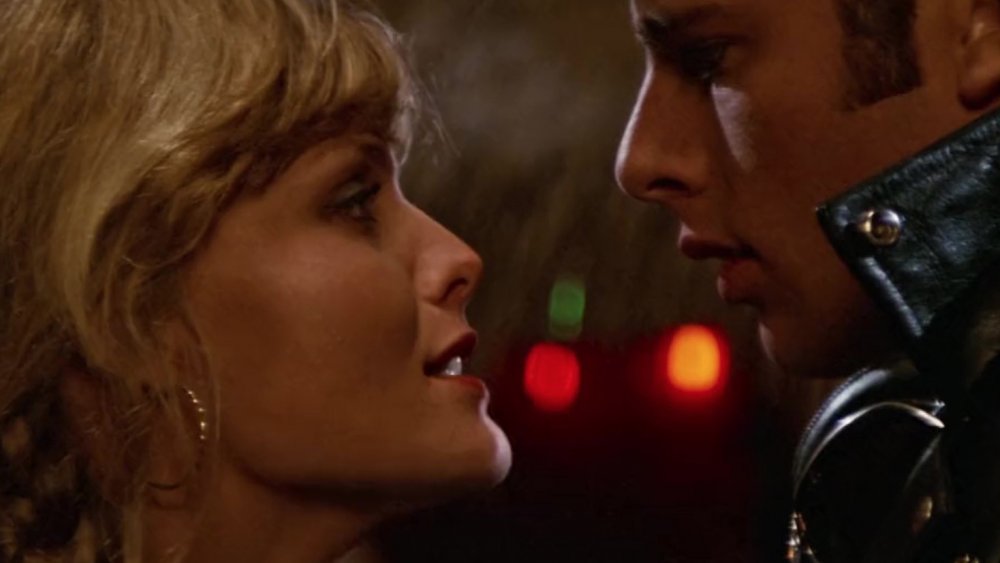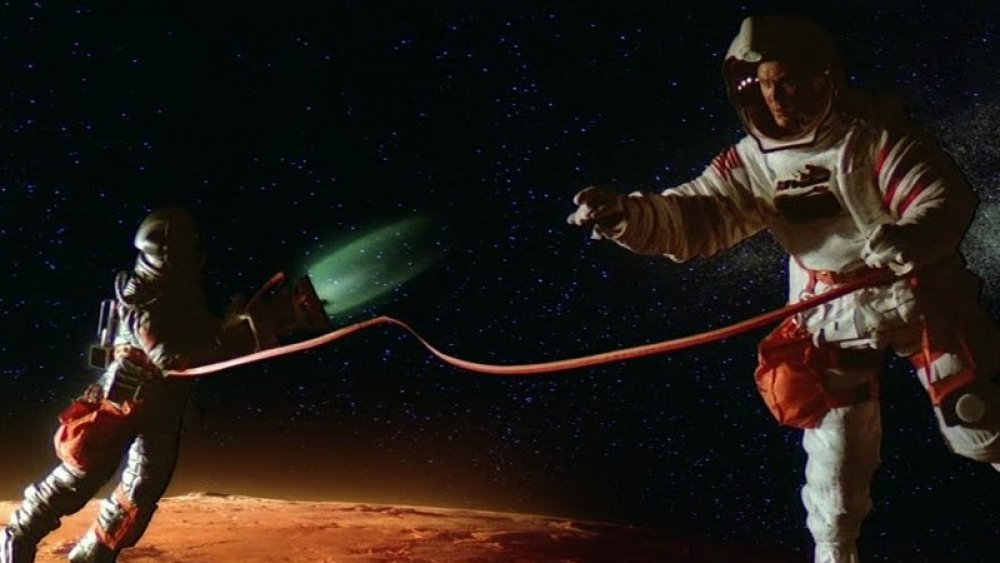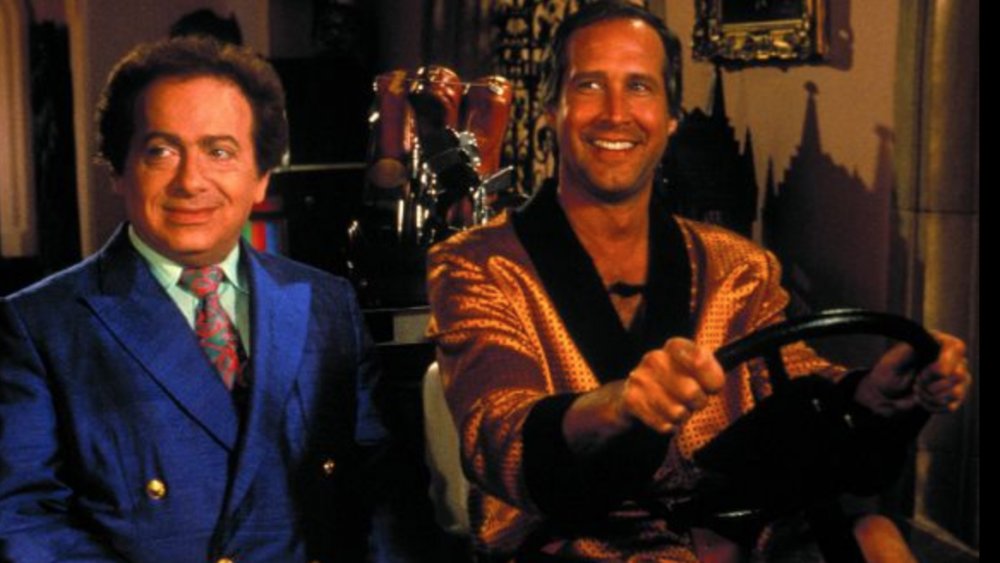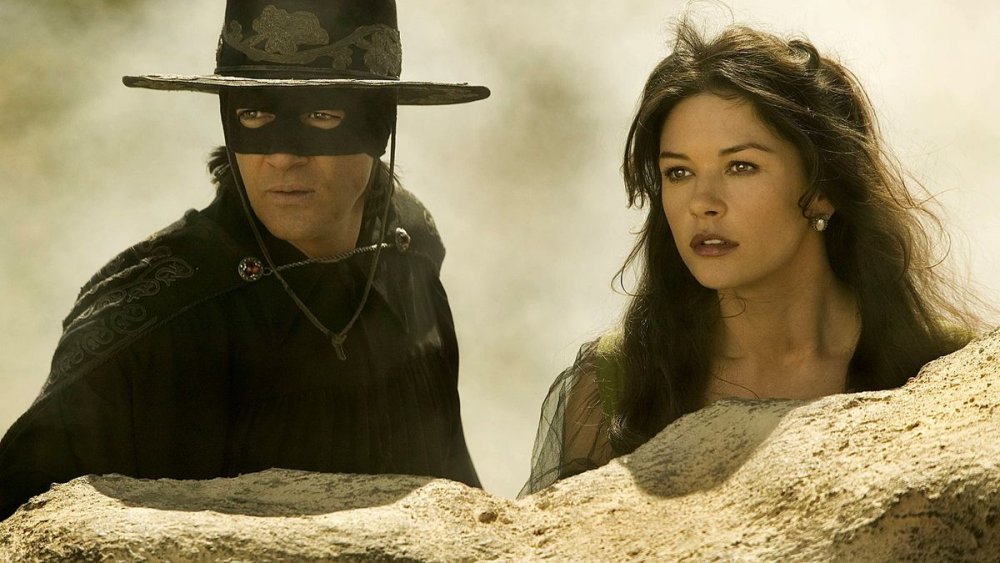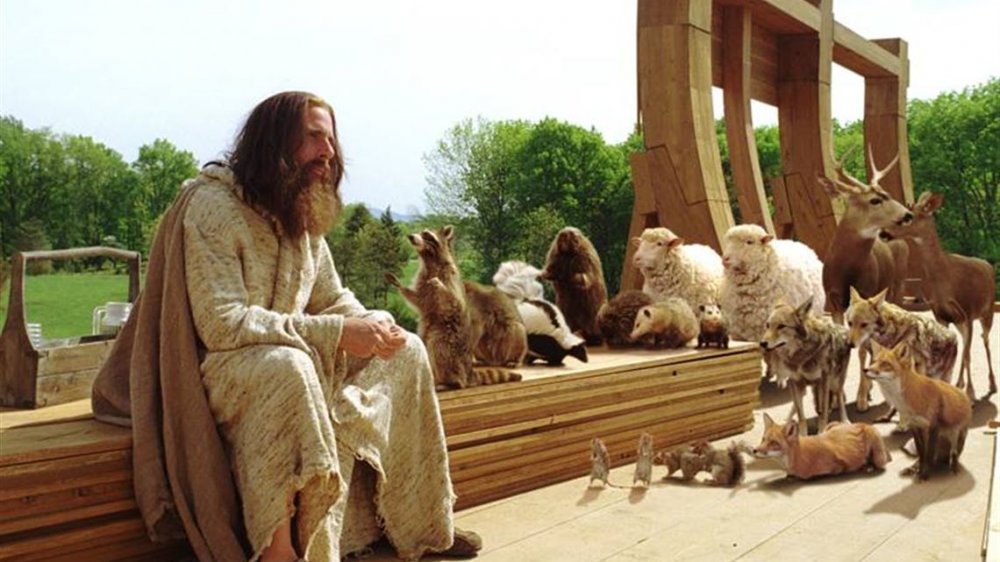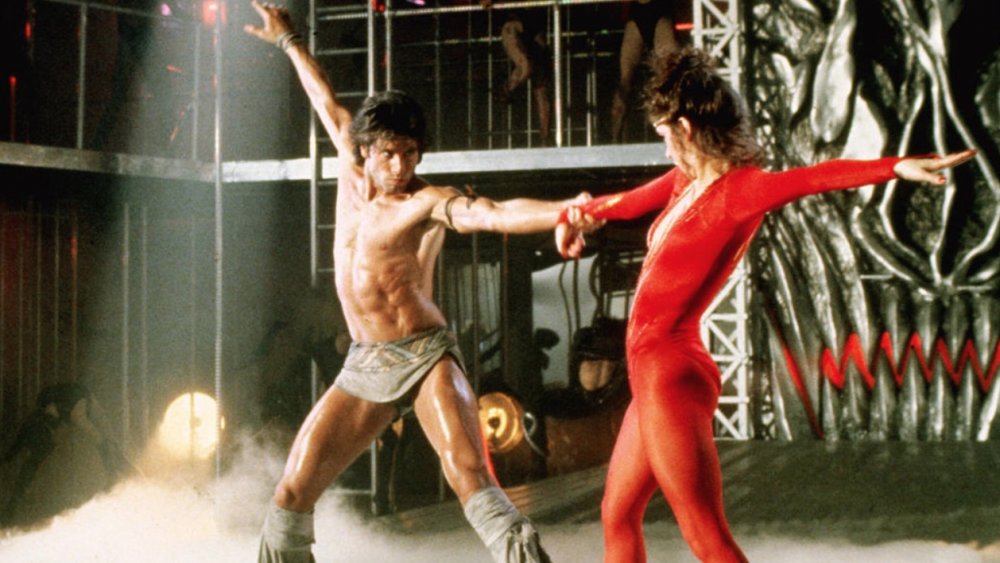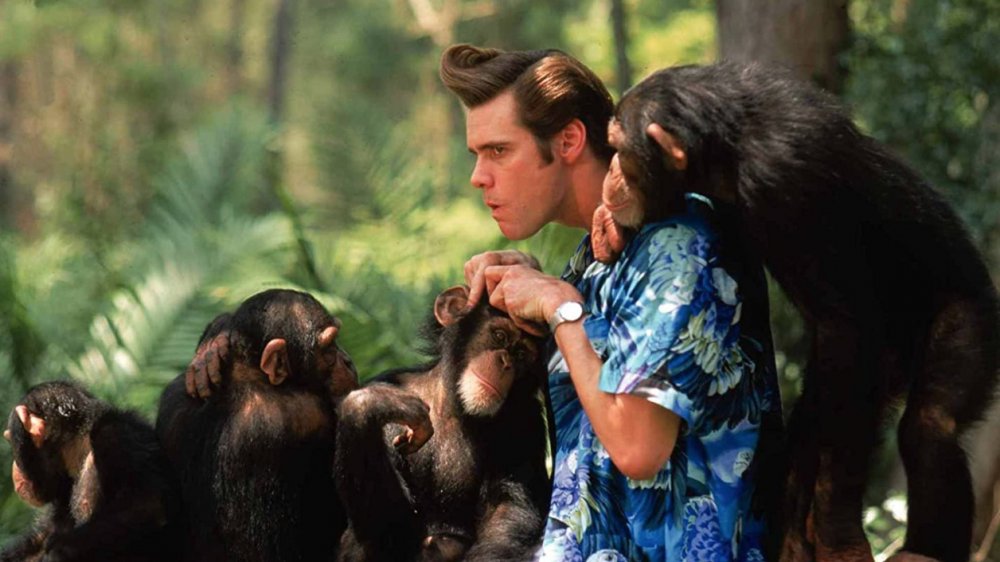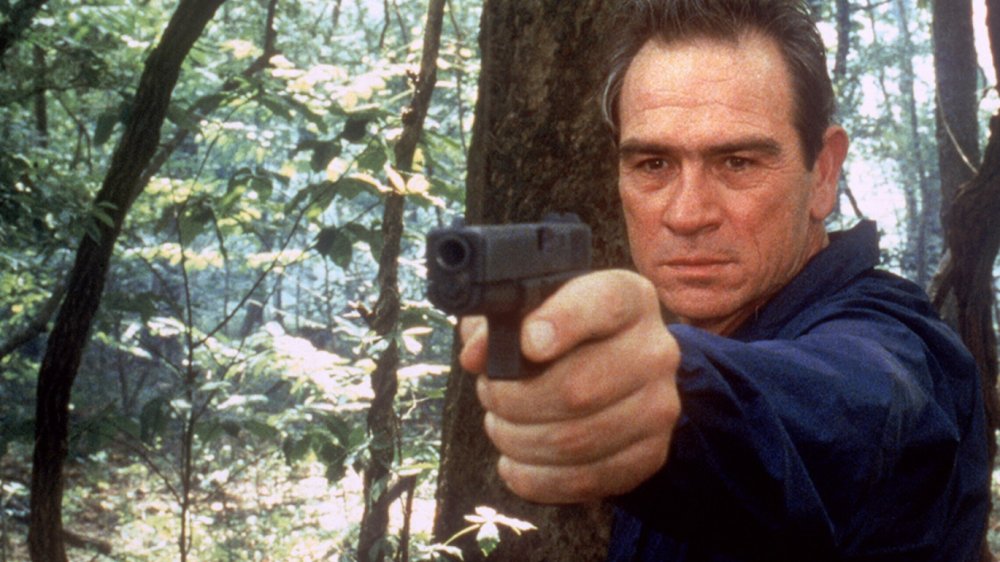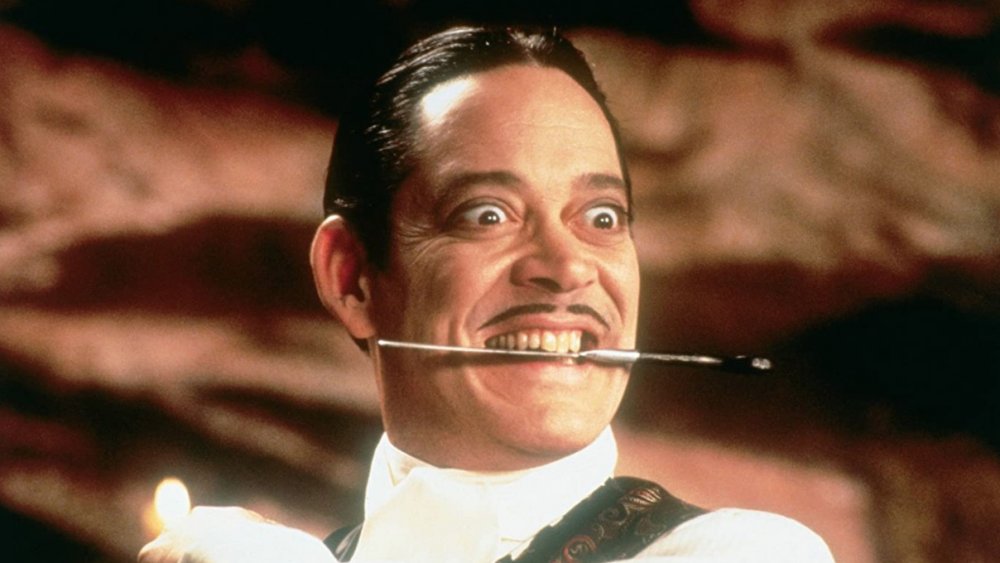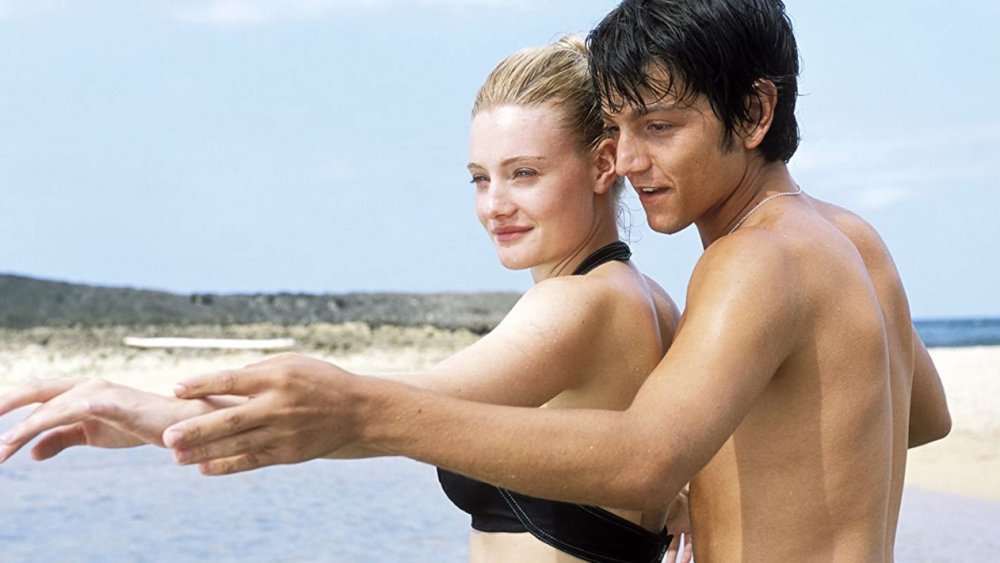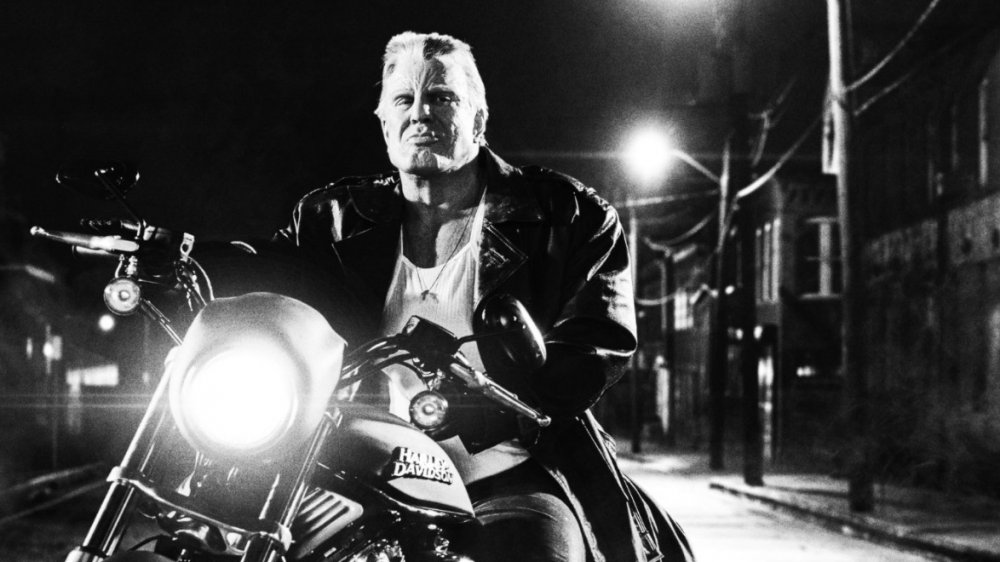The Real Reason These Movies Only Had One Sequel
Here's a controversial statement. Not every movie has to be part of a some multi-film franchise or cinematic universe. In fact, most of them haven't been. It may be strange to those born in the new millennium, but there was a time when a movie was a self-contained piece of entertainment. If it did well enough at the box office, it got a sequel. If the sequel did well enough, it got another sequel. And another. The process repeated itself until one of the sequels inevitably bombed. Then the movie studio just started all over again in five to ten years. It was a simpler time, to be sure. But it was nice being able to sit down and watch a movie without feeling like you were just watching a two-hour trailer for the next one.
So what about the movies that only had one sequel? Many are classics you may not even realize had a sequel to begin with (and you'll wish you'd never found out about after you see them). Others were from would-be franchises that simply ran out of gas after the second film. Whatever the reason, they all have one thing in common ... there was a reason they only had one sequel. And what was the reason? The answers may surprise you.
The Three Men series ended after just one sequel
The '80s were weird, especially for movies. One of the decade's biggest hits — and domestically the top-grossing movie of 1987 — was a comedy directed by Mr. Spock. With an $11 million budget, Three Men and a Baby made $167 million, about $378 million today, more than The Hangover. Math like that means one thing — a sequel! While Baby director Leonard Nimoy (yes, that Leonard Nimoy) was out, Three Men and a Little Lady brought back Tom Selleck, Ted Danson and Steve Guttenberg for more wacky hijinks about three carefree dudes forced to take care of a girl.
Critics didn't care for it, putting the baby to bed with a 38% Tomatometer score, but it did so-so business, earning $71 million in 1990, a profit for a modestly budgeted comedy but a steep 58% drop from the original. In the meantime, the movie's studio, Walt Disney, relaunched their uber-profitable animation division in 1989 with The Little Mermaid. The Mouse House and moviegoers moved on, but around 2010, Tom Selleck said he was hopeful for Three Men and a Bride. What happened? Disney clearly focused their live-action dollars on Marvel, Star Wars and remaking their animated hits instead.
Grease 2 was not the word
Contrary to popular belief, moviegoers don't like franchises — they like franchise characters. Keep your original characters home and audiences will, too. For proof, check out Ghostbusters: Answer the Call, MIB: International and the grandfather of this inexplicable cinematic sin, Grease 2.
Grease was the word in 1978, earning $159 million domestically and $396 million worldwide on a $6 million budget, becoming the biggest hit of the year. A sequel was rushed into a hard-and-fast release date before a writer was even hired, but this time without Sandy and Danny. Of course, Olivia Newton-John and John Travolta were the ones that audiences wanted, and with a pre-Scarface Michelle Pfeiffer in the lead, Grease 2 crashed, earning $15 million, less than 8% what Grease earned domestically, killing the franchise.
Pfeiffer emerged unscathed, but her co-star, Maxwell Caulfied, went from being "the next Richard Gere or John Travolta" to being untouchable. Grease 2's producers made the mistake of thinking it was the brand moviegoers cared about. It wasn't. It was Sandy and Danny. After the first film's "happily ever after" ending, they tried to repeat the formula with new characters and failed. There were rumors of a Grease 3 (with Travolta and Newton-John reprising their roles) in 2003, but middle-aged actors recreating their teenage characters didn't excite anyone, so it never happened.
The Space Odyssey series never left Earth
2001: A Space Odyssey is regarded as one of the greatest movies of all time, but it also made a monolith's worth of money, $68 million worldwide (about $506 million today) on a $12 million budget in 1968. Why no immediate sequel? Simple. Arthur C. Clarke hadn't written the book. Before Jurassic World and Game of Thrones, Hollywood actually waited until a book was written before filming an adaptation.
So when 2010: Odyssey Two arrived in 1982, Hollywood promptly released a movie in 1984. While it can't hold a candle to its predecessor (how could it?), 2010 was fairly well regarded by critics and moviegoers, earning $41 million. But a long time had passed since 2001's historic success, and when Clarke released 2061: Odyssey Three in 1987 and 3001: The Final Odyssey in 1997, no movies were immediately made. By waiting on Clarke to write the books, decades had passed, 2001's prestige had grown, and audiences had turned their attention to other sci-fi franchises like Star Wars.
Years ago, Tom Hanks had expressed interest in starring in and producing a 2061 film, and a 3001 mini-series was announced with Ridley Scott set to produce. But Scott decided to focus on The Martian and Alien: Covenant instead, and 3001 never left Earth. No sequel to 2001 or 2010 has come up since, but we wouldn't be surprised to see the series land on a streaming service one day.
Caddyshack II is not alright
Caddyshack is The Godfather of bro comedies and maybe the best golf movie ever. Caddyshack II may be the worst sequel ever. So yeah, there was a bit of a drop off there. Eight years had passed since Caddyshack, and in that time, Chevy Chase did National Lampoon's Vacation, while Bill Murray and the film's writer/director, Harold Ramis, starred in one of the biggest hits of the decade, Ghostbusters. So why did they come back for the Caddyshack sequel?
Well, as Ramis explained to The A.V. Club, the film's producers approached him to write a Caddyshack sequel focused on Rodney Dangerfield. Alas, Dangerfield dropped out of the project and Ramis followed suit, leading to several other writers taking over. The resulting film was many different things, but none of them were funny. Caddyshack II is basically a remake of Caddyshack but with Jackie Mason in the Dangerfield part, Robert Stack in the Ted Knight role, Dan Aykroyd replacing Bill Murray in the lunatic supporting role, and only Chevy Chase returning, albeit in a "I'm only here for the paycheck" cameo. Also, Caddyshack II inexplicably had a PG-rating. Critics gave it a 4% Tomatometer rating, and it bombed with $11 million. After Caddyshack II's failure, the franchise dying wasn't a surprise. What's surprising is why they tried to make a sequel eight years later to begin with. Unlike the gopher dancing to Kenny Loggins, waiting that long was not alright.
The Mask of Zorro only got away with one sequel
There have been a lot of Zorro movies since 1920. One of the most memorable was The Mask of Zorro in 1998, starring Anthony Hopkins as the aging Don Diego de la Vega who passes his titular "mask" off to a Mexican bandit played by Antonio Banderas. The movie was a solid hit with moviegoers, earning $250 million worldwide on a $95 million budget in 1998. However, it wasn't a runaway blockbuster, so seven years passed before a sequel, The Legend of Zorro, arrived in 2005.
Sadly, by this time, the sizzling chemistry between Banderas and co-star Catherine Zeta-Jones had worn off, and audiences weren't interested in seeing the "happily ever after" lovers turn into a nagging couple. Legend received a 26% Tomatometer score and earned $142 million worldwide (nowhere close to what Mask made) on a $75 million budget. While Legend was bad, Banderas was still well liked in the role. Could Zorro 3 happen one day? Alas, Antonio is over it.
This Carrey-less sequel was an Almighty mistake
When it comes to the box office, Jim Carrey's most popular character isn't Ace Ventura or the Mask. It's "God." Well, Bruce, technically. Worldwide, Bruce Almighty outearned even Batman Forever and How the Grinch Stole Christmas with $242 million domestically and $484 million worldwide on a $81 million budget, making it the most successful star vehicle ever, as it was sold exclusively on Carrey's name above the title. Not bad. Naturally, Universal wanted a sequel. The perfect project presented itself in the spec-script The Passion of the Ark, about a modern-day Noah, which the studio planned on retooling for Bruce 2. Too bad Carrey wasn't interested, as he doesn't like playing the same character twice.
So Universal hired Steve Carell, who played a scene-stealing supporting role in Bruce and saw his stock rise after The 40-Year Old Virgin. However, Evan Almighty's $175-$210 million budget made it the most expensive comedy ever at the time, making it tough to turn a profit even with Bruce Almighty's historic gross. Carell was no Jim Carrey, and Evan Almighty sank the Ark with a meek $100 million domestic and $174 million worldwide, a 66% drop. In 2012, Carrey was rumored to return for Bruce Almighty II, while Morgan Freeman said he'd love to play God again in 2016. We've heard nothing since. However, we think spending millions on a second sequel wouldn't be an act of faith. It'd be an Almighty mistake.
The Saturday Night Fever franchise should stay dead
The 1970s were good to John Travolta and Sylvester Stallone. Travolta transitioned from TV to movies with Saturday Night Fever and Grease, while Stallone went from obscurity to superstardom with Rocky. Then the two A-listers came together in a movie that could've killed both of their careers. It was Staying Alive, the follow-up to Saturday Night Fever, and it turned out to be one of the worst sequels ever.
A Fever sequel script was immediately written after the first film's success, but Travolta disliked the bleak tone. The project was abandoned for a few years until a new script was written to Travolta's liking. Meanwhile, Travolta wanted a director who could bring the same energy as Rocky III's director, so the studio hired Sylvester Stallone himself. Stallone rewrote the script again, this time to match his and Travolta's vision even further. It was also toned down for a PG rating. Two of the '80s biggest stars, making a sequel to one of the '70s biggest hits ... what could go wrong?
Well, Staying Alive committed two cardinal cinematic sins. It was a PG sequel to an R-rated hit, and it came out six years after the original. Disco was dead by the 1980s, but nobody wanted to see Tony Manero on a chorus line, either. Also, it was bad. Like "one of the only films with a zero percent on Rotten Tomatoes" bad. There were rumors in 2010 of Saturday Night Fever 3, but hopefully this series stays dead.
Nature took its course after one sequel in the Ace Ventura series
Few movie stars made more of a splash than Jim Carrey did in the 1990s. While he'd been in a few movies and also performed on In Living Color, his career took off with Ace Ventura: Pet Detective. With a modest $15 million budget, Pet Detective made $72 million domestically and $107 million worldwide in the winter of 1994. Ace Ventura: When Nature Calls was rushed into production and released in November 1995 (a turnaround you rarely see anymore) and did even better — $108 million domestically and $212 million worldwide. And then ... nothing.
Making Ace Ventura movies until the wheels fell off or the pomade ran out seemed like a no-brainer, and it was, except for one minor detail. Jim Carrey wasn't interested. For one, Jim Carrey doesn't like playing the same character twice, and he was especially uninterested in sequels during the peak of his career (he didn't make another sequel for 20 years until 2014's Dumb and Dumber To). And secondly, shooting Ace Ventura: When Nature Calls was a bad experience. The original director was even fired after his work disappointed Carrey, and he was replaced with the film's writer. With Carrey making bank and calling the shots, repeating Nature's misery didn't interest him. There were reports of an Ace Ventura 3 in late 2019, with Carrey rumored to return, but it may be time to let nature take its course.
Filmgoers ran away from The Fugitive franchise
Harrison Ford turned down the role of Dr. Alan Grant in Jurassic Park, presumably so he could star in the summer's third biggest hit, The Fugitive. While that may seem like a boneheaded move now that Jurassic Park is a franchise worth $5 billion, remember what a big hit The Fugitive was — $183 million domestic and $368 million worldwide. It also scored a Best Supporting Actor Oscar for Tommy Lee Jones. With green and gold like that, a sequel seemed like a good idea.
But what's the story? You can't have Ford's Dr. Richard Kimble framed for killing his wife twice. Bringing Kimble back in any circumstance stretched credulity (how unlucky was this guy?). So the solution? No Ford. Instead, The Fugitive 2 would focus on the character Jones won his Oscar for playing — U.S. Marshal Sam Gerard. Only this time, he'd be chasing another wrongfully accused man on the run, this time played by Wesley Snipes. Alas, the sequel played like a pale remake of the original, as U.S. Marshals earned a disastrous 26% Tomatometer score and only $57 million domestic and $102 million worldwide. Turns out making a sequel without your star may not have been such a good idea?
The Addams Family only had one sequel due to tragedy
Making The Addams Family into a multi-film franchise should've been a "snap." The Addams Family opened in 1991 to solid reviews and boffo box office, earning $113 million domestic and $191 million worldwide on a $30 million budget. Addams Family Values' reviews were even better, but its $46 million domestic gross was grim. What happened? Well, it opened a week before Mrs. Doubtfire. In hindsight, Robin Williams disguising himself as an octogenarian Scottish woman is terrifying, but at the time, Mrs. Doubtfire cleaned Addams' clock.
Then The Addams Family lost its patriarch when Raul Julia died tragically in October 1994, ending any possibility of a true sequel. However, the series kinda had another sequel, only from a different company, with a new cast, and on a different medium. Warner Brothers and Saban (the Power Rangers studio) put together a pseudo-sequel, Addams Family Reunion, as a TV movie meant to serve as a pilot for a new series. Anjelica Huston and Christopher Lloyd declined to return, and they were replaced by Daryl Hannah and Patrick Thomas, while Tim Curry replaced Julia. Only Carel Struycken returned to play Lurch, because who else could? The TV movie never became a TV series, but The Addams Family successfully returned to the big screen in 2019 as an animated film. Sadly, we never saw a true trilogy capper to the seminally spooky 1990s comedy series.
Dirty Dancing: Havana Nights put baby in the corner
Moviegoers had the time of their lives in 1987 when Dirty Dancing swayed into theaters. Powered by solid reviews, Patrick Swayze's star power, and Johnny Castle and Frances "Baby" Houseman's chemistry, Dirty Dancing earned $63 million domestically and $213 million worldwide on a $6 million budget, making it one of 1987's biggest hits and definitely one of the most profitable. Shockingly, but thankfully, a sequel never followed, though there was a short-lived TV series in 1988 before the movie studio behind Dirty Dancing declared bankruptcy in 1990.
Movie studios wisely realized nobody wants to see the "happily ever after" young lovers dirty dance into divorce as a middle-aged couple, so baby was put in a corner. Instead, a prequel/"reimagining" was released in 2004. Dirty Dancing: Havana Nights was essentially a remake set in Cuba in 1958 that critics hated and audiences ignored, giving the movie a $14 million domestic and $27 million worldwide gross.
Swayze tragically died in 2009, ending any possibility of a true sequel. In 2017, which was Dirty Dancing's 30th anniversary, ABC released a TV musical remake, with Abigail Breslin as "Baby." The TV movie imagines how a sequel might've gone down, as Frances writes books and is married (not to Johnny) with a kid, while Castle has taken their story to Broadway. Sadly, people weren't having it, and it was roasted by fans of the original. But in regards to any follow-up film, in 2017, the screenwriter of the original movie said, "We'll see."
One trip to Sin City was enough
Following Spider-Man's record-breaking success in 2002, just about every comic book property was getting the big screen treatment — even Frank Miller's edgy, caustic, black-and-white, blood-drenched, pulply crime saga, Sin City. Co-directed by Miller and Robert Rodriguez, Sin City earned an impressive 77% Tomatometer score from critics who marveled at its groundbreaking visual style. Moviegoers gave it a $74 million domestic and $158 million worldwide gross on a $40 million budget. With piles of Miller's graphic novels available to adapt, an immediate sequel seemed inevitable. But none happened.
In the meantime, both co-directors damaged their credibility — Rodriguez with the Planet Terror portion of his experimental double feature with Quentin Tarantino, Grindhouse, and Miller with 2008's disastrous Will Eisner adaptation, The Spirit. Meanwhile, Zack Snyder applied Sin City's visual approach of shooting exclusively with green screen to another Miller property, 300, making bank as a result. Nine years passed before Sin City: A Dame To Kill For came and went with $13 million domestic and $39 million worldwide (a 76% drop). It was also just terrible. While Sin City 3 was in works before Dame, those plans obviously changed. Sin City: A Dame To Kill For waited too long and the movie business, and especially moviegoers, had moved on.
